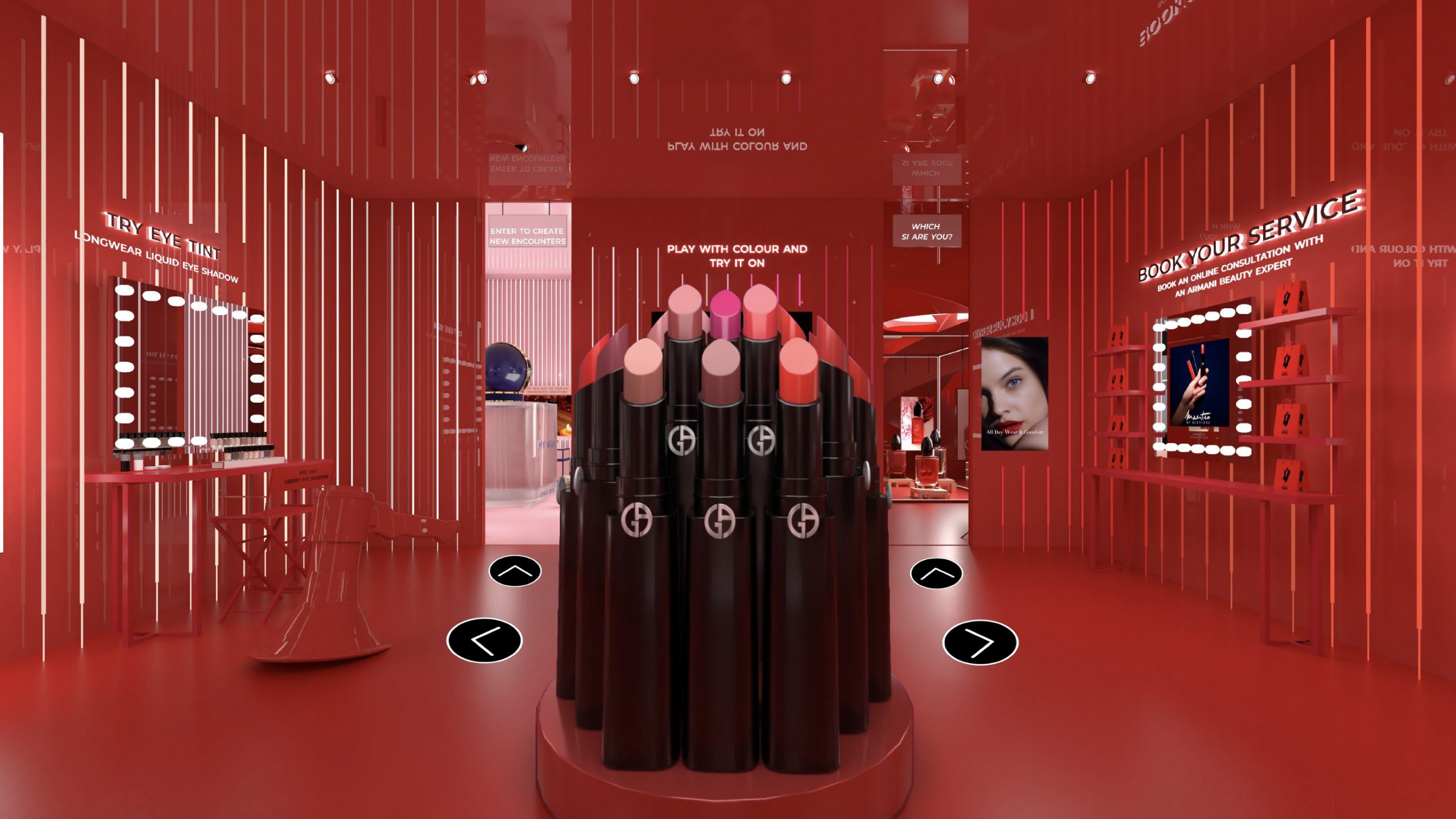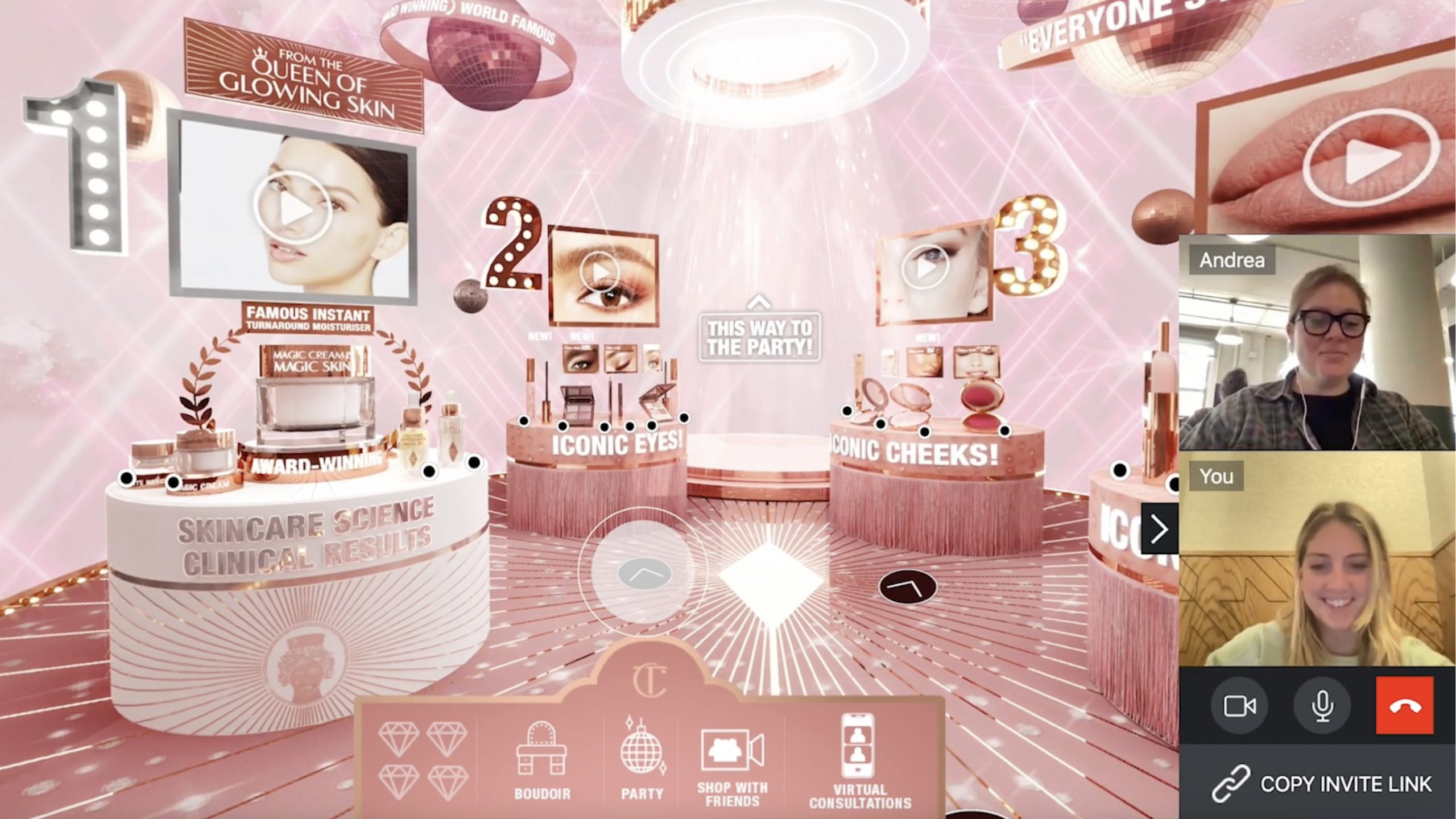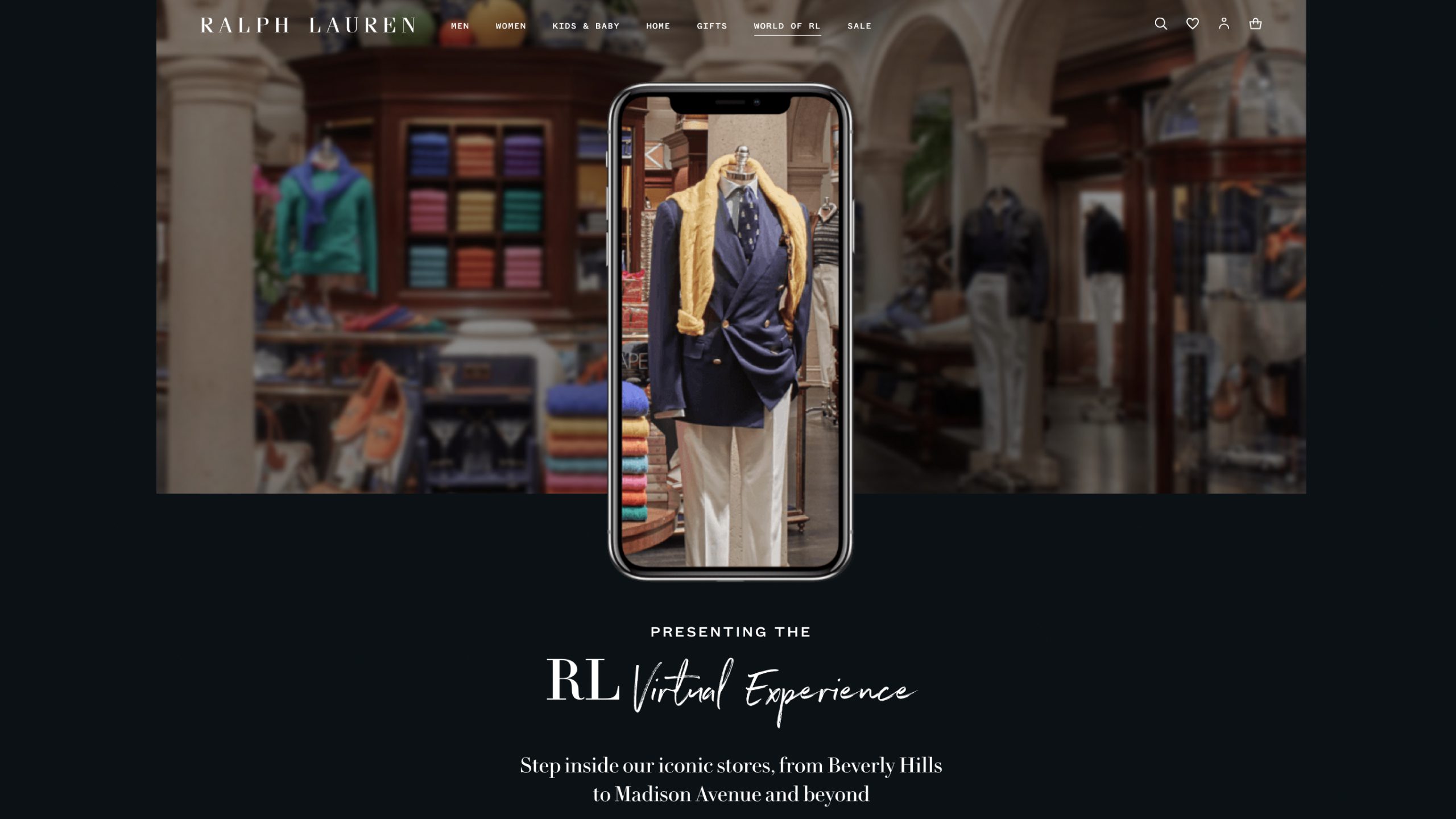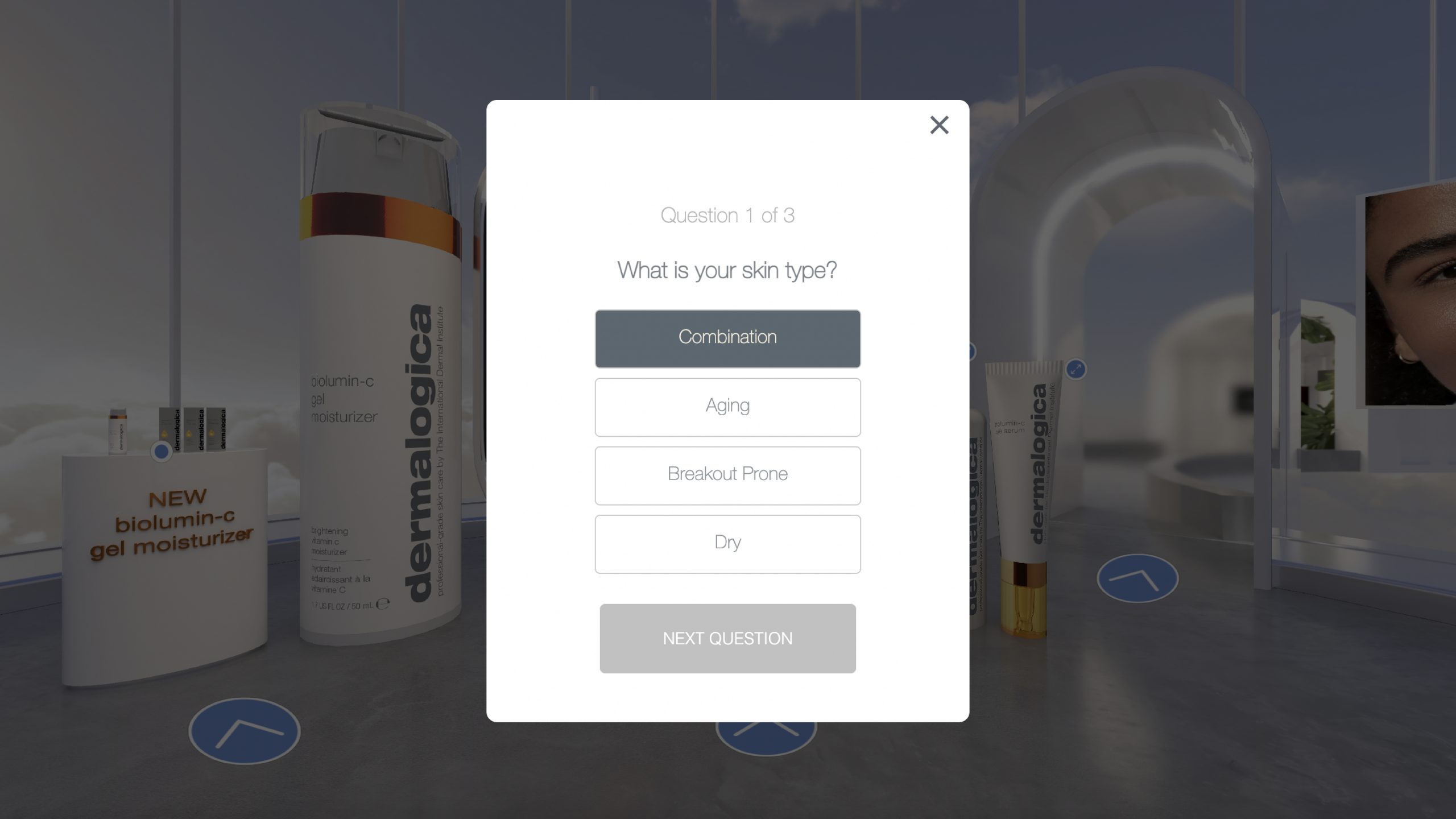For brands, digitization is increasing at a growing rate as technology and consumer expectations continue to evolve rapidly. E-commerce technologies are allowing consumers to easily shop for their favorite products from the comfort of their homes, making online shopping the preferred way to shop. Gen Z and Millennial consumers, in particular, crave online shopping. Over 40 percent of Gen Zers purchase more than half of their clothing items online. However, this increase in time spent online has introduced a new consumer need as users are now missing the interactive, engaging experiences they once had shopping in physical stores.
Many brands have begun to capitalize on this consumer need and have employed technologies and strategies such as gamification and gaming platforms, virtual stores, live & social e-commerce, metaverse technologies, corporate social responsibility, and personalization and customization. The following 6 strategies and technologies are paving the way for brands to engage a younger audience base.
1.) Gamification and Gaming Platforms
A tactic that is increasingly gaining popularity among brands is the use of gamification and gaming platforms. While different concepts, both methods mix the idea of games with e-commerce to promote engagement and, ideally, conversion. The key difference to note between the two is that gamification is the term for when games are incorporated into e-commerce sites, whereas the use of gaming platforms is aimed at building brand awareness among the existing audience within a game.
Gamification has been shown to drive meaningful engagement for the end-user. The Club Paradise Virtual Experience, a collaboration between Crocs and rap superstar Saweetie, is a great example of gamification to enhance engagement. The Club Paradise offered a drawing to purchase a pair of Crocs bundled with Saweetie’s new Jibbitz pack. The Saweetie Jibbitz Matching Game tasked the user with matching all of Saweetie’s new Jibbitz charms in a tic-tac-toe format. The game drove high user engagement for The Club Paradise.

Many brands are beginning to understand the value of establishing a brand presence on gaming platforms like Roblox and Fortnite. Roblox is home to 202 million monthly active users, just behind Fortnite with 350 million daily active users—each allowing users to purchase virtual clothing, accessories, or other in-game extras with real currency. While brands are creating experiences on both platforms, Roblox currently lends itself to a higher degree of customizability. Tommy Hilfiger is the latest brand to release a Roblox world. Entitled “Tommy Play”, the game allows users to explore a reimagined Brooklyn through BMX biking as they collect “Tommy Coins,” discover art and graffiti from real Brooklyn-based artists, and amass Tommy branded garments and accessories. The company plans to release monthly map and feature updates to keep users engaged all summer. Tommy has followed suit with many brands who are beginning to understand the power of establishing brand awareness among young audiences on Roblox.
2.) Virtual Stores
With Gen Zers and Millennials making more purchases online, adding experiential elements to e-commerce is the natural next step to enhance engagement and brand loyalty. Experiential e-commerce has presented itself in a variety of ways, but one of the most notable and immersive is through Virtual Stores. Obsess has created a variety of virtual stores for retailers that have integrated their existing e-commerce sites with virtual reality 3D rendered or 360° photographed store experiences. The Metaverse Consumer Report revealed that 25% of consumers have already shopped in virtual stores, and among those that have shopped in a virtual store 70% have made a purchase. Shoppers in a younger age cohort show a higher likelihood of making a purchase from a virtual store, due to their comfort with emerging technologies.
As an example, Armani Beauty’s recently unveiled virtual store, powered by Obsess, blends elements of an in-store experience with the convenience of online shopping. Set in the UK’s Piccadilly Circus, the store is digitally rendered and packed with exclusive content. The store features hotspots that tell the Giorgio Armani story, a virtual photo booth where users can take a selfie with their device, AR try-on technology that helps users select their perfect shade, professional makeup tutorials for Armani’s product line-up comprised of 40 shades, a fragrance matching quiz, and much more.

3.) Live & Social E-Commerce
In addition to experiential e-commerce, an increasingly popular component of e-commerce is live commerce and social engagement. According to Mckinsey, “Live commerce combines instant purchasing of a featured product and audience participation through a chat function or reaction buttons.” Live commerce technologies allow users to shop while viewing a live stream from a sales associate or influencer, or while video chatting with their friends as they shop together.
Nordstrom introduced live stream shopping to its e-commerce site, allowing users to shop while viewing real-time commentary from Nordstrom employees and brand partners. The live stream shopping channel features a calendar of events filmed in different locations and focused on different clothing brands and looks. The Senior Vice President of Nordstrom believes, “Livestream Shopping enables us to stay closer to the customer with interactive and engaging experiences that allow for discovery, personalization, and service at scale.”

As another example, Charlotte Tilbury introduced an innovative feature called “Shop With Friends” developed by Obsess as part of its Pillow Talk Party virtual store. The social experience invites customers to shop with their friends and watch live beauty masterclasses together. The Obsess functionality allows users to shop with their friends within the virtual store via a live video chat, as they browse the store and its products, creating an enriching social experience. This innovation comes as a large number of retailers begin to push into the metaverse, aiming to capture the convenience of online retail with the social experience of in-store shopping.

4.) Metaverse Strategies
As the metaverse grows, users are beginning to prefer e-commerce experiences that have metaverse-like components. Many users who are already interested in gaming platforms like Roblox and Fortnite are familiar with concepts such as play-to-win and digital assets. The metaverse is adopting many of these videogame-like capabilities, and similarly, many e-commerce brands are adopting them to improve user engagement.
Louis Vuitton illustrates the usage of the play-to-win concept with its mobile game called the “Louis Game”. The game, released in 2021, is a celebration of Louis Vuitton’s bicentennial birthday and has provided added engagement for 2 million Louis Vuitton shoppers who have downloaded the game. Louis Vuitton took the game a step further when it introduced a new dimension to the game that gave users who had reached the last level access to view exclusive Louis Vuitton NFTs. In this new dimension, users then had the chance to win the NFTs via a raffle system. The game is set to come to real life in experiential form and will likely be a new channel for Louis Vuitton to sell its products in a more engaging, Gen Z- and Millennial-friendly way.
5.) Corporate Social Responsibility
Corporate social responsibility is increasingly becoming an important factor that younger consumers weigh in deciding to shop from a brand.
Climate change for example is a social issue that can particularly influence consumers’ buying decisions. Brands as a result are course-correcting their corporate operations around this sentiment and some are even establishing their entire corporate ethos around eco-friendliness and sustainability. While there are many avenues that brands are exploring in pursuit of greater sustainability, virtual stores are a viable solution. Virtual stores, like e-commerce sites, have little store footprint and waste associated with them. However, unlike e-commerce sites, virtual stores don’t sacrifice the experience of shopping and discovering in a store-like environment and are more immersive and engaging than traditional e-commerce shopping.
Ralph Lauren is an example of a global brand that has realized the possibilities of virtual stores. The RL Virtual Experience, powered by Obsess, is an online hub that lives on Ralph Lauren’s website, from where users can select and explore various Ralph Lauren flagship stores from the comfort of their own homes. Virtual stores are more eco-friendly for consumers as they don’t necessitate travel to a physical store location, hence creating lower carbon emissions. Virtual stores, in addition to blending experience with convenience, serve as a unique way for brands to tailor their operations to their consumer’s expectations, without sacrificing business goals.

6.) Personalization and Customization
Personalization is also quickly becoming a mainstream and expected feature in e-commerce. Messaging and content personalization can be powerful tools when persuading a potential buyer to shop one’s e-commerce site. According to Adobe, “67% of consumers think it’s important for brands to automatically adjust content based on the current context. When brands don’t adjust accordingly, 42% of consumers will “get annoyed” that content isn’t personalized.”
One type of personalization strategy in e-commerce is the use of product recommendation quizzes. These quizzes are designed to ask users questions to help them find products that they would like in-store. Neostrata uses a product recommendation quiz to help consumers find their perfect skincare regimen. This quiz is especially successful because it asks users detailed questions about their skin to be able to recommend the right products for each customer.

Another example of personalization is the Dermalogica Virtual Store’s Skin Care Quiz. The quick quiz provides the user with three questions to target their unique skincare routine based on skin type, age, and goals. The quiz is an initial step for the user to begin their journey to a customizable skin treatment that includes a variety of options to target their personal skin concerns. Based on the results of the quiz, the user is guided to a specific room in the virtual store, such as the Power Cleanse Room, that offers products to address their personal skin type and concerns.

As consumers continue to expect more from their e-commerce channels, brands must continue to create new strategies and adopt new technologies to keep Gen Z and Millennial consumers engaged. This becomes especially true as the world continues to become ever more digitized and the metaverse takes shape as the new generation of the internet.
To learn more about how Obsess can help your brand leverage new e-commerce technologies and strategies, write to us at contact@obsessVR.com.









